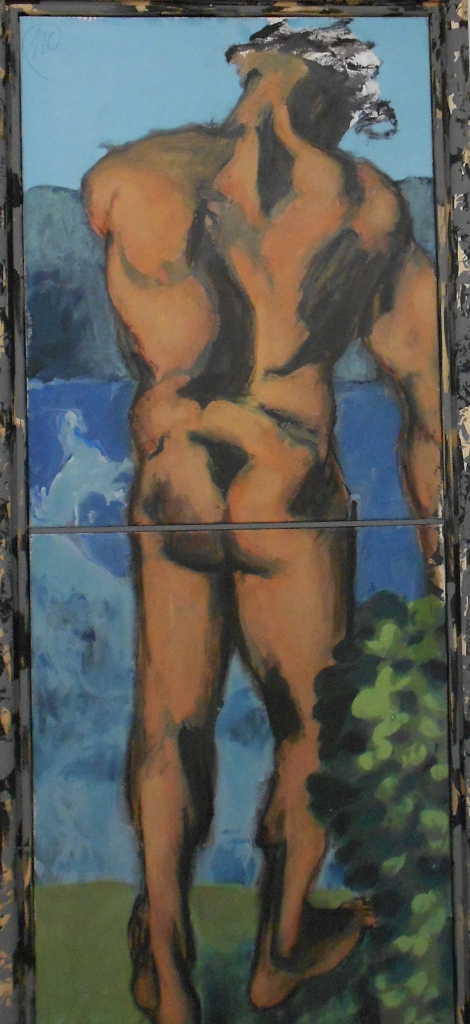 |
| Markus Lüpertz, Promenade, Exhibition View |
For an exhibition filled with disformed,
disabled figures, all of whom have been violated, their limbs torn off, their
genitals erased, I found Promenade to be a curious choice of title. None of these
figures were going anywhere in a hurry, and most of them don’t even try to
move. In keeping with their classical inspiration, they are more comfortable in
a posture of repose, always standing tall, despite their dismemberment and
disability. They are the figures of an anonymous war, in an anonymous space, bearing
witness to the vagaries of another world. On approaching Suzanne Tarasieve’s
tiny Marais Gallery, one of Lüpertz’s figures stands at the window, ultimately,
contemplating its own reflection, removed from the busy Christmas shoppers who
fill the streets outside. The figure was haunting.
 |
| Markus Lüpertz, Figure at the window Suzanne Tarasieve, Paris |
I wondered what an artist so closely
associated with Cold War, divided Germany and post-war torn Europe would be
doing today. How would Lüpertz respond to a world that is so fundamentally
different from the one we knew in the 20th century? The one in which
he came of age as an artist? And even though we are meant to see Lüpertz as
unique, an individual abstract artist, doing something so radically different
from those around him, I was reminded, from beginning to end, of the postwar
German neo-Expressionist artists, particularly, the works of Georg Baselitz onexhibition a couple of years ago at the Musée d’art Moderne.
 |
| Markus Lüpertz |
That said, Lüpertz works in plaster,
Baselitz in wood, where Baselitz’s figures are pronounced and proud, but
inwardly reflective, Lüpertz’s figures are in the vein of their classical
forebearers, giving away little emotion. And I noticed very quickly, there were
no women here at Susanne Tarasieve’s gallery, just men, mythical, oversized,
deformed, crippled men. Similarly, although they are violated in their own
individual ways, quite different from Baselitz’s chiseled bodies, each of
Lüpertz’s figures has a history, it’s just that we don’t know what it is, where
or when it might have taken place. There is a longing a nostalgia, a sadness
that we come to perceive, particularly, as we spend more time with each
tortured figure.
 |
| Markus Lüpertz, Centaure, 2014 |
Many of the figures have metal rods, rusted
nails, broken stakes, and shrapnel flung through what remains of their limbs.
They are warriors, having fought a war that we know nothing of. They are alone,
but give the impression that they are content in their loneliness – because
they are the descendants of sculptural perfection, masculine superiority, after
Dionysos, Hercules, Orpheous. But as
much as they are warriors, they are mythical figures, not real humans, they are without
genitals, with imperfect bodies and blown off faces. They are like an ode to
every solider who has lost his body on the battlefield, and been given a traumatized identity in exchange.
 |
| Markus Lüpertz, Ruckenakt, 2004 |
The most striking thing about the figures
in the paintings that surround the sculpted warriors is that their backs are
always turned to us. They are not looking, as if to retain their integrity at
the other side of their trauma. Like the sculpted figures, the painted ones may
descend from greek mythological figures, but they don’t belong in any of the
categories that are usually given to sculptural, or painted representations
of gods: they are all at once historical and mythical, tribal and from
antiquity, they are deformed giants and classical figures, always referring to
Germany’s tortured past, and yet, telling a story that belongs to everyone on an
intimate level.
No comments:
Post a Comment